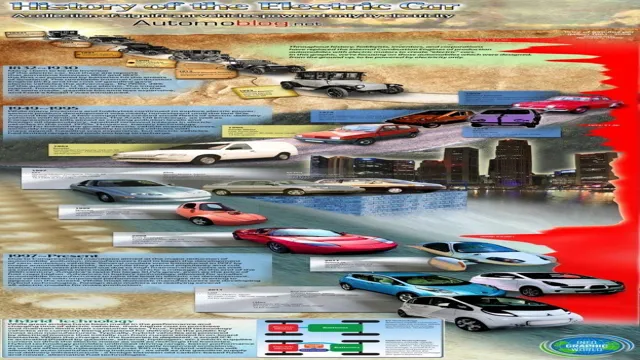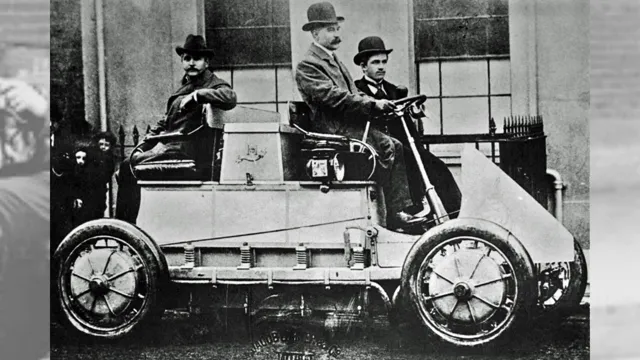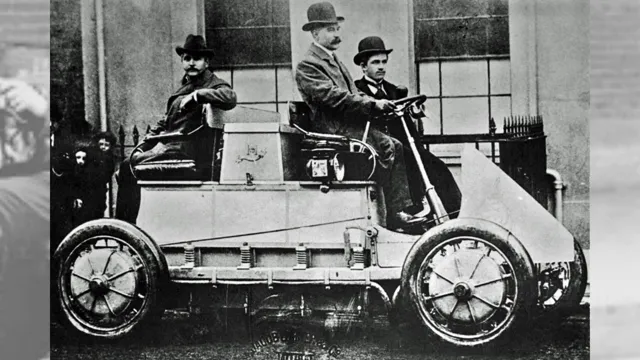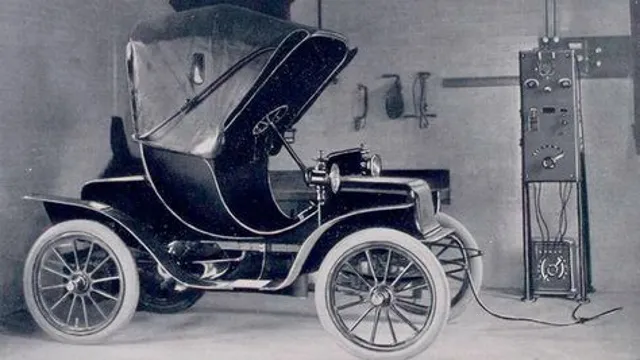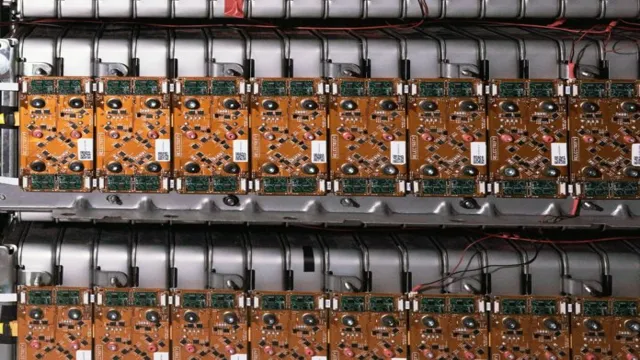Revolutionizing the Road: The Fascinating History of Electric and Hybrid Cars
Have you ever wondered about the history of electric and hybrid cars? Although electric vehicles (EVs) and hybrid electric vehicles (HEVs) have only recently become mainstream, their history dates back to as early as the 1800s. In fact, electric cars were popular in the late 19th century, and at one point, electric vehicles outnumbered gasoline-powered ones on the streets of New York City. However, factors such as the discovery of oil and the rise of gasoline-powered cars led to a decline in the popularity of electric vehicles throughout the 20th century.
It wasn’t until the 1990s and early 2000s that interest in hybrid and electric cars began to pick up again. With concerns about climate change and air pollution growing, many people began looking to more sustainable transportation options. Today, we are seeing rapid advancements in electric and hybrid car technology, with new models coming out every year.
Join us as we dive into the fascinating history of these vehicles and look at what the future may hold.
Early Beginnings of Electric Cars
Electric and hybrid car history dates back to the early 1800s when Robert Anderson built the first electric car prototype in Scotland. However, it was not until the late 1800s when electric cars gained popularity in the United States. The first electric vehicle was developed by Thomas Davenport, and later, in 1891, William Morrison designed the first electric car that could hit a speed of 14 miles per hour.
Nevertheless, it was the introduction of the gasoline-powered engine which accelerated the development of the automobile industry, leading to the displacement of electric car production. The idea of hybrid cars was not commercially viable until 1905 when Dr. Porsche first developed his first hybrid car.
Today, we witness a dramatic shift towards pure electric and hybrid cars, comprising increasing eco-awareness, government regulations on fuel efficiency, and technological advancement making them more accessible and cost-effective. The advancements in electric and hybrid car technology have come a long way since the 1800s and offer a sustainable and eco-friendly alternative to gas-powered vehicles.
Late 1800s and Early 1900s
The late 1800s and early 1900s marked the birth of electric cars. The electric car industry was born in the United States, with several inventors competing to create the first electric car. Among them was Thomas Davenport, who invented the first electric motor in 1834, and Robert Anderson, who built the first electric car prototype in Scotland in 183
However, it was not until the late 1880s that electric cars became commercially available. One such car was the Electrobat, built by Isaac Rice and built in Philadelphia in 1890. It was powered by a rechargeable battery and reached a top speed of 20 miles per hour.
While gasoline-powered cars remained dominant, electric cars appealed to urban dwellers because of their quiet operation and lack of pollution. However, with advancements in internal combustion engines, the electric car industry declined in the early 1900s.

Decline of Electric Cars
The early beginnings of electric cars can be traced back to the late 1800s and early 1900s when electric cars were a common sight on the roads. However, with advancements in technology, the development of gasoline-powered cars became popular, and electric cars began to decline in popularity. The lack of infrastructure for recharging batteries, the high cost of batteries, and limited driving range were some of the major drawbacks that contributed to the decline of electric cars.
Additionally, the discovery and production of fossil fuels led to the widespread use of gasoline-powered cars, which became more affordable and practical for the masses. Despite these setbacks, electric cars continued to be developed and refined, and in recent years have gained renewed interest as a sustainable solution for reducing carbon emissions and combating climate change.
Rise of Hybrid Cars
The electric and hybrid car history has seen a significant rise in recent years as more people are looking for eco-friendly transportation options. Hybrid cars first hit the market in the late 1990s, but they didn’t become widespread until the early 2000s. These cars capture kinetic energy from braking that would otherwise be lost and use it to recharge their batteries.
By combining electric power with traditional gas engines, hybrid cars offer improved fuel efficiency and lower emissions. However, it wasn’t until 2010 that fully electric cars gained significant attention with the launch of the Nissan Leaf and the Tesla Roadster. Electric cars can be charged using a standard electric outlet, but they require a much larger battery pack than hybrid cars.
The popularity of electric and hybrid cars continues to grow, and many major car manufacturers have released eco-friendly models to meet growing demand. From the early days of hybrid cars to the current trend towards electric vehicles, it’s clear that eco-friendly transportation options are here to stay.
First Hybrid Cars
The first hybrid cars to hit the market were a revolution in the automotive industry, combining gas and electric power to produce a more fuel-efficient vehicle. In the early 2000s, Toyota launched the first mass-produced hybrid vehicle, the Prius, which was a major success. The rise of hybrid cars can be attributed to the increasing concerns about climate change and the need to reduce carbon emissions.
As people became more aware of the impact of fossil fuels on the environment, they started to look for alternative solutions to power their cars. Hybrid cars provided a way for drivers to enjoy the benefits of both gas and electric vehicles, resulting in smoother and quieter rides with less pollution. Today, many automakers have joined the hybrid car market, producing a range of models to meet the growing demand for eco-friendly cars.
As environmentally conscious consumers continue to push for change, it is likely that hybrid cars will become even more popular in the years to come, helping to create a cleaner and more sustainable future for us all.
Toyota’s Success with the Prius
Toyota’s success with the Prius is a testament to the rise of hybrid cars in the automotive industry. The Prius was introduced at a time when fuel-efficient cars were in high demand due to rising gas prices and environmental concerns. Toyota was able to capitalize on this demand by creating a car that not only saved on gas, but was also stylish and reliable.
The Prius quickly became a status symbol for environmentally conscious individuals and celebrities alike, and Toyota was able to dominate the hybrid car market. The key to their success was their investment in hybrid technology and their commitment to improving it. They continued to make improvements to the Prius, making it more aerodynamic and more energy efficient with each model year.
As a result, the Prius became the go-to car for those who wanted to save money on gas and reduce their carbon footprint. The rise of hybrid cars has also spurred competition among automakers to create their own hybrid models, thus increasing consumer options for eco-friendly cars. Overall, Toyota’s success with the Prius has paved the way for a more sustainable future in the automotive industry.
Expansion of Hybrid Market
The hybrid market has been expanding rapidly in recent years, with the rise of hybrid cars leading the charge. These vehicles offer a unique blend of fuel efficiency and power, making them an increasingly popular choice for environmentally conscious consumers. One reason for this surge in popularity is the lower cost of ownership, as hybrid cars typically have lower maintenance and fuel costs than traditional gasoline-powered vehicles.
Additionally, advancements in technology have made hybrid cars more user-friendly, with better battery life and improved charging capabilities. As the demand for hybrid cars continues to grow, manufacturers are investing heavily in research and development, striving to create even more innovative and efficient models. Overall, the expansion of the hybrid market is a positive trend for both consumers and the environment, and it seems likely that we will continue to see strong growth in this sector in the years to come.
Modern Electric Car Movement
The modern electric car movement has gained traction in recent years, but the history of electric and hybrid cars goes back much further. In fact, electric cars were some of the earliest vehicles on the road, dating back to the late 1800s. However, as the technology for internal combustion engines advanced, petrol-powered vehicles quickly became the transportation of choice for most people.
It wasn’t until the 1990s that electric and hybrid cars began to make a comeback, as concerns over air pollution and the environmental impact of gas-powered vehicles grew. The introduction of the Toyota Prius, the first mass-produced hybrid car, was a major turning point in the industry, inspiring other automakers to invest in electric and hybrid technology. Today, electric cars are becoming more common as advances in battery technology and charging infrastructure make them more practical for daily use.
With the need to reduce greenhouse gas emissions becoming increasingly urgent, the ongoing evolution of electric and hybrid cars is likely to be a major force in the automotive industry in the coming decades.
Tesla’s Impact on the Industry
Tesla has revolutionized the automotive industry with the modern electric car movement. Their innovative designs, cutting-edge technology, and focus on sustainability have inspired other car manufacturers to pivot towards electric vehicles. The automaker has brought electric cars to the mainstream by making them more accessible and creating a demand for the technology.
Tesla’s high-quality electric powertrain has set a new standard in the market with unmatched range, acceleration, and performance. This movement towards electric cars has resulted in a significant reduction in greenhouse gas emissions, promoting a cleaner and more sustainable future. With Tesla leading the way, the industry is driving towards a future of sustainable transportation.
Government Incentives for Electric Cars
The modern world is witnessing a movement towards electric cars, and the government is playing a vital role in incentivizing this shift. With concerns around climate change and pollution, many governments are offering various incentives to encourage people to switch to electric cars. These incentives include tax credits, rebates, and exemptions from certain taxes.
For instance, some governments offer a tax credit of up to $7500 for electric car buyers. These incentives make electric cars more affordable and attractive to the general public. Moreover, electric cars are cost-effective in the long run, as they require less maintenance and have lower running costs.
The government’s support is crucial in this movement towards cleaner and more sustainable transportation options. As we continue to move towards a greener future, it is essential to encourage and support the use of electric cars, and government incentives play a crucial role in achieving this goal.
Future of Electric and Hybrid Cars
The history of electric and hybrid cars reveals an exciting future. The first electric cars were developed in the mid-19th century, but the technology wasn’t advanced enough to make them practical. In the late 1990s, Toyota introduced the Prius, the first mass-produced hybrid car, which kickstarted a resurgence in electric vehicles.
Since then, electric and hybrid cars have come a long way, with advancements in battery technology and range capabilities. Car manufacturers such as Tesla are at the forefront of the electric vehicle revolution, with sleek and stylish designs that are so futuristic it’s hard to believe they’re actually on the road. As more and more people become environmentally conscious, the demand for electric and hybrid cars will continue to rise.
With the increasing amount of charging stations available and government incentives, owning an electric or hybrid car is becoming more accessible every day. It’s exciting to think about what the future holds for these eco-friendly cars, and the role they’ll play in shaping the automotive industry for years to come.
Conclusion
In conclusion, the evolution of electric and hybrid cars has been a journey of innovation and adaptation. From early experiments with electric propulsion in the 19th century to the modern-day push for greener alternatives to traditional fossil-fuel-powered vehicles, the electric and hybrid car history has been a testament to human ingenuity and determination. Although there were some setbacks and challenges along the way, we’re now at a point where electric and hybrid cars are becoming increasingly popular and accessible to everyday drivers.
As we continue to prioritize sustainability and eco-friendliness, it’s clear that electric and hybrid cars will play an important role in shaping the future of the automotive industry. So, whether you’re a die-hard environmentalist or simply someone who loves cutting-edge technology, there’s no denying that the electric and hybrid car history is an exciting and fascinating chapter in the ongoing story of human progress and ingenuity. Buckle up and enjoy the ride!
FAQs
What was the first electric car invented and when?
The first electric car was invented by Scottish inventor Robert Anderson in 1832.
When did the first hybrid car hit the market?
The first hybrid car, the Toyota Prius, hit the market in Japan in 1997.
What was the first commercially successful electric car?
The first commercially successful electric car was the Baker Electric in 1899.
How have electric and hybrid cars evolved over time?
Electric and hybrid cars have improved significantly over time with longer battery life, increased range, and more efficient charging options. Today’s electric and hybrid cars also have advanced technologies, such as regenerative braking and advanced driver assistance systems (ADAS).

